Bio 225 - Exam 2 - Sensory Systems (incomplete)
1/65
There's no tags or description
Looks like no tags are added yet.
Name | Mastery | Learn | Test | Matching | Spaced |
|---|
No study sessions yet.
66 Terms
Sensory systems do what (broad)
detect stimuli and send information to an integrating center
convert info abt stimulus into action potentials

What detects sensory stimuli
neurons (receptor protein in neuron) or accessory cells (receptor protein in epithelial censory cell) (in areas/tissues that need to be replaced a lot such as skin)

Sensory receptors what do they do
convert incoming stimuli into changes in membrane potential
sensory receptors can be classified by their…
stimulus modality
Sesnory receptor types
chemoreceptors - detect the presence of chemicals in the environment
mechanoreceptors - detect pressure and movement, including proprioception
photoreceptors - detect light
thermoreceptors - detect temperature
electroreceptors - detect electric fields (fish)
magnetoreceptors - detect magnetic fields (birds)
sensory receptors encode 4 important features
stimulus modality, location, intensity, and duration
labeled line theory
separate and dedicated sensory pathways encode different stimulus modalities (ex: taste, smell, and touch)
A _____ _____ neuron is associated with one type of ______
particular afferent; receptor
Each _____ _____ follows a particular ____ for ______
afferent neuron; pathway; integration
Polymodal receptors
are sensitive to multiple sensory modalities
Polymodal nocireceptors tranduce _____, ____, and _____ cues into ____ that are sensed as _____
thermal; mechanical; chemical; signals; pain
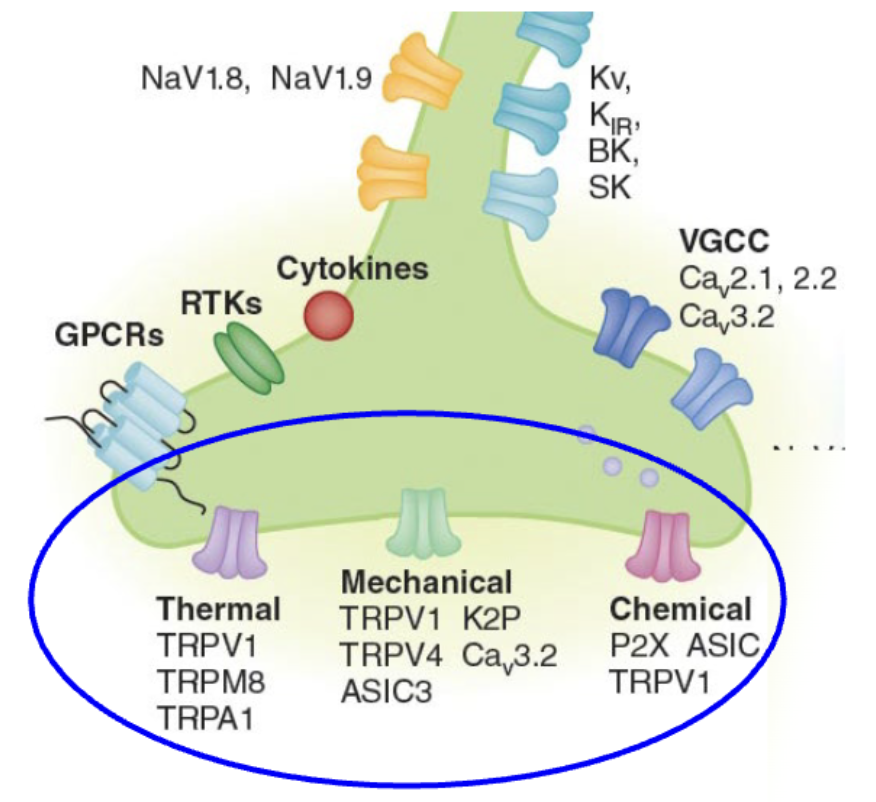
_____ of ____ ______ likely encodes ______ information from some polymodal receptors
pattern; action potentials; modality
Types of receptive fields
large receptive fields and small receptive fields
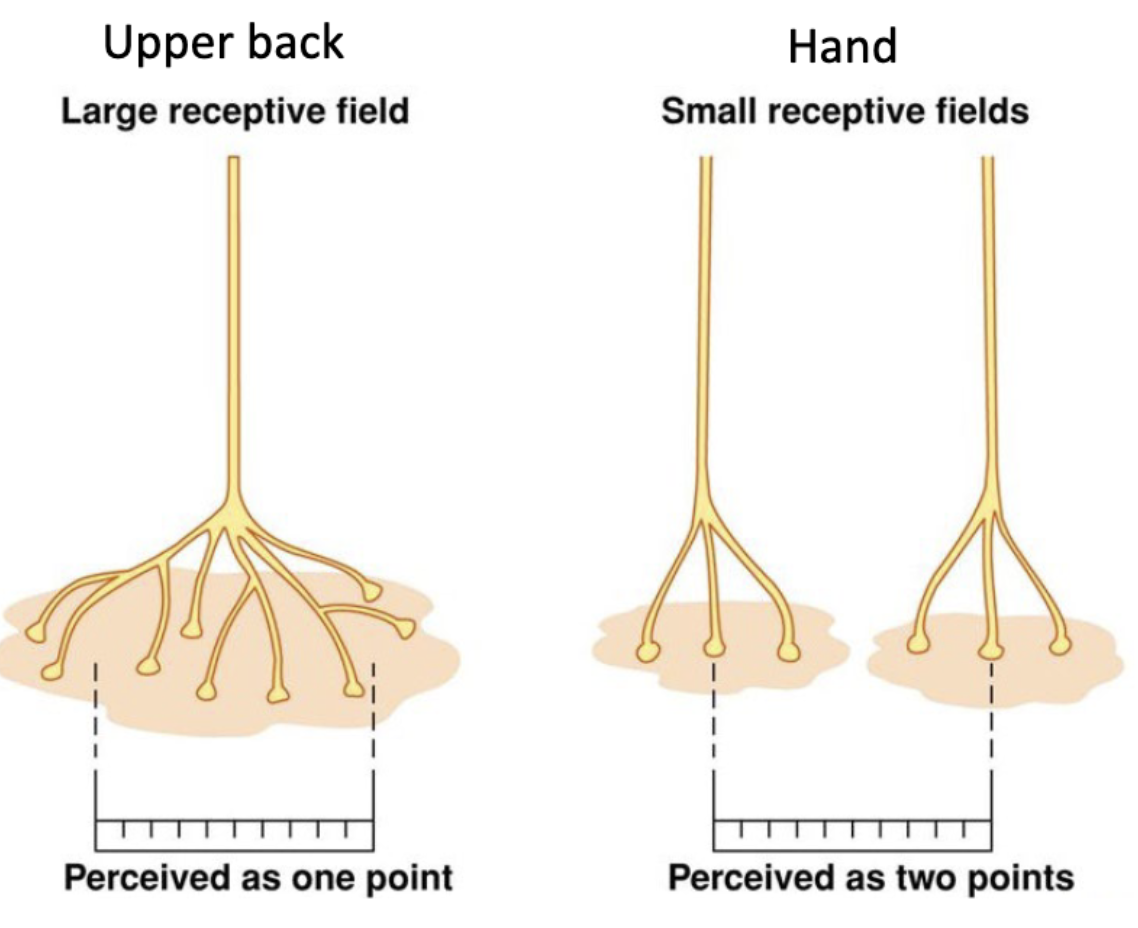
Overlapping receptive fields do what
improve ability to localize stimulus
Lateral inhibition function
improves acuity (defining exactly where touch is)

Action potential frequency encodes
stimulus strength
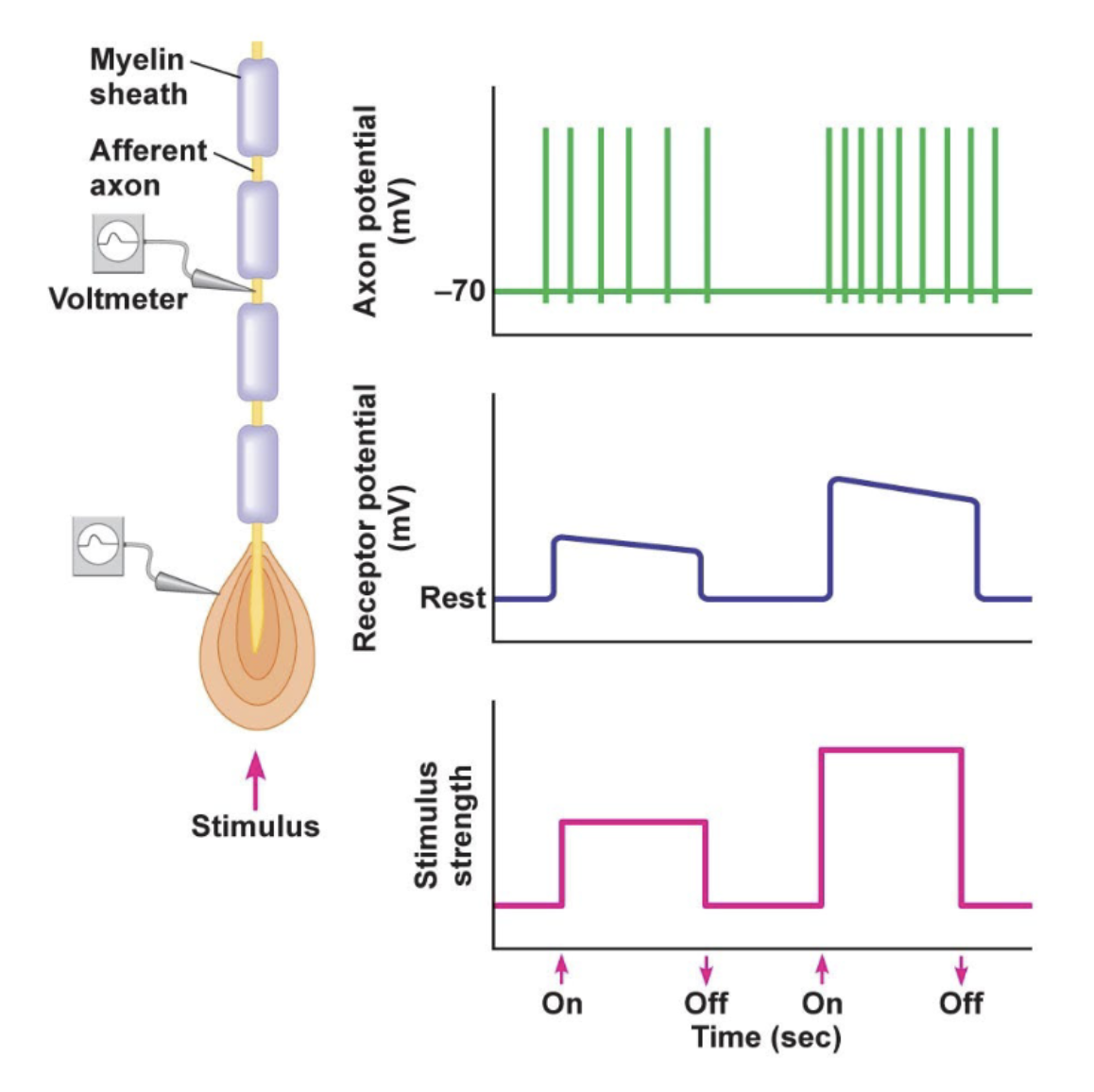
Receptor potential
a graded potential w/in the receptor
Sensory receptors encode a _____ range of stimulus ______
limited; intensities
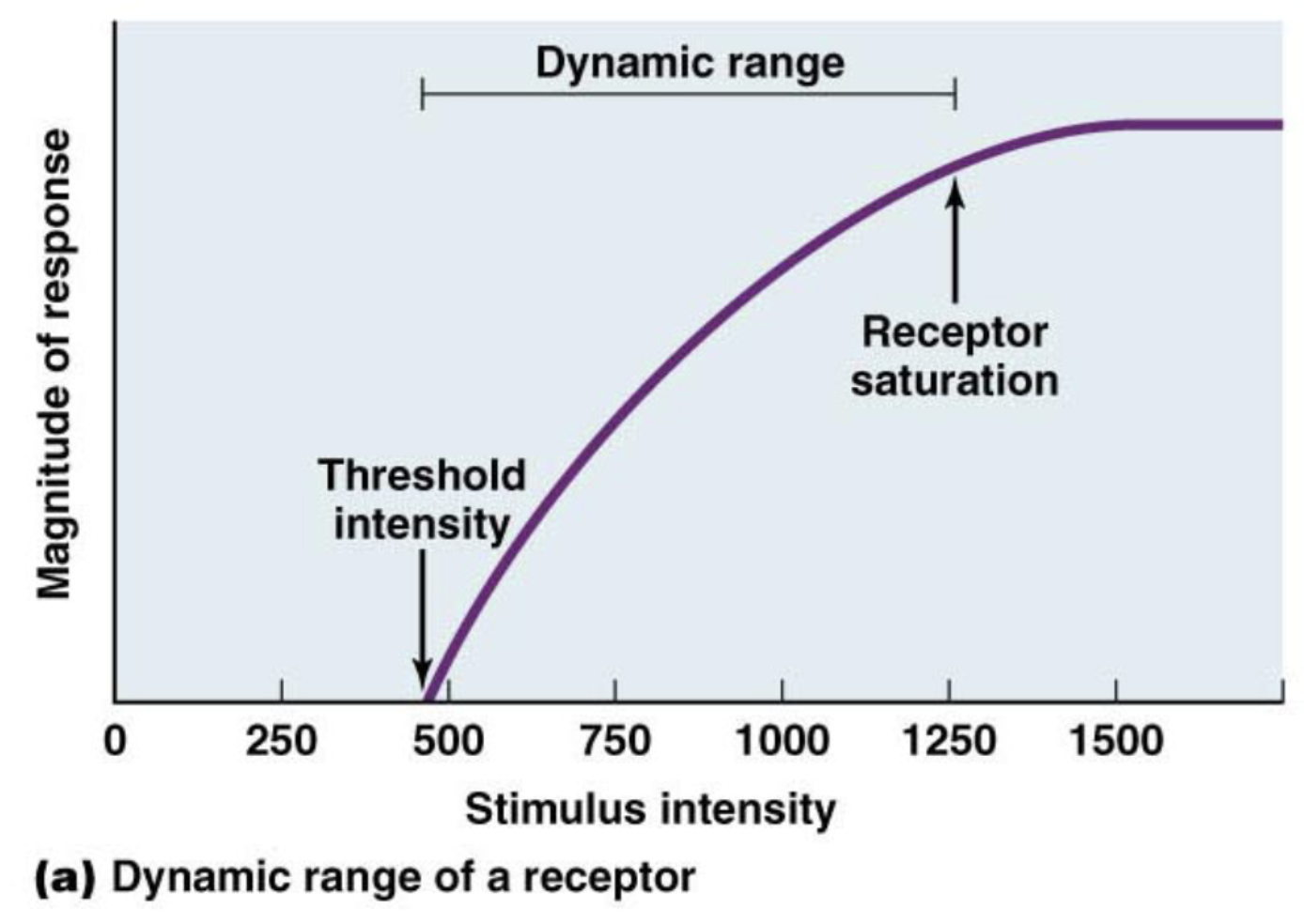
Dynamic range
at what point does a receptor start sensing something and at what point does it reach saturation
Sensory discrimination improves by
distributing sensitivity amongst the receptor population
graph shows good sensitivity and large dynamic range
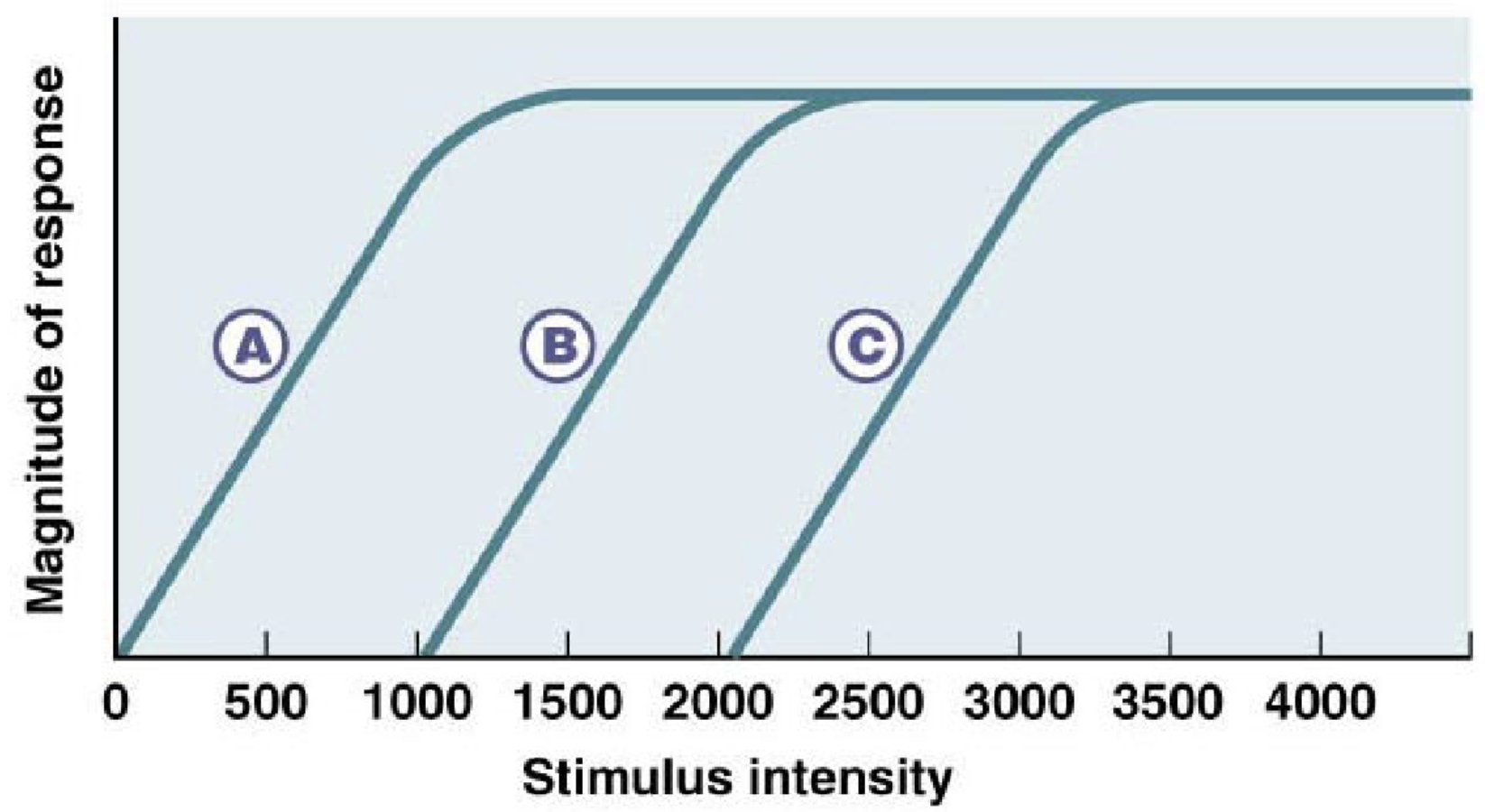
_______ _____ ___ __________ allows for a compromise b/w dynamic range and discriminaiton
logarithmic encoding of intensity
Tonic receptors
can encode stimulus duration

Phasic receptors
encode changes in stimulus
can do so in several ways
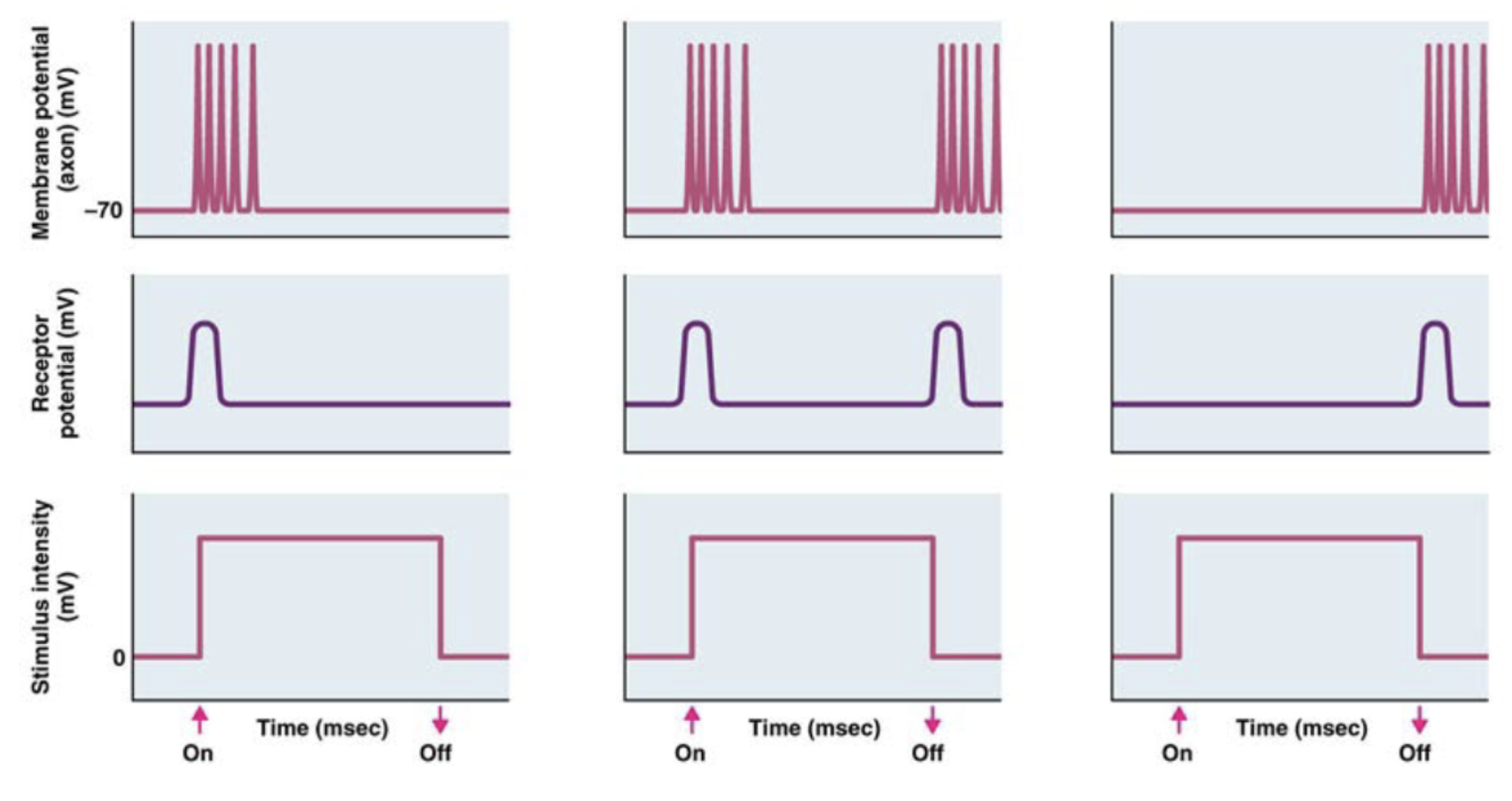
Types of chemoreceptors
exteroceptors:
interoceptors:
Exteroceptors
external to body (could be in the mouth/nasal passages)
olfaction
gustation
nocioception
?pheromones?
Interoceptors
internal to body
blood pH
Chemosensors in stomach
BP sensors
Odorant receptors neurons - receptor type and mechanism
express G-protein coupled receptors
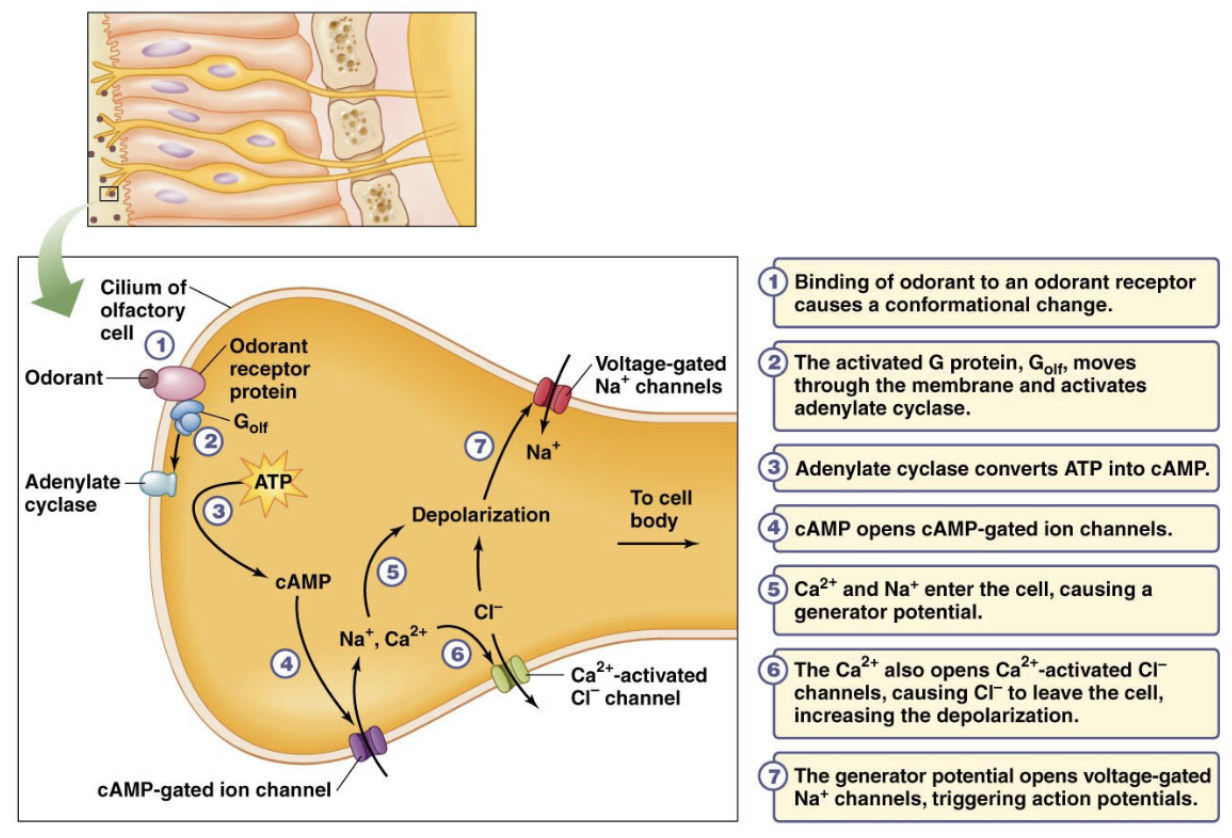
Each afferent ORN expresses a
single odorant receptor
Combinatorial code for odors
odorant molecules binds G-protein receptor (can bind multiple different receptor types) —> tiggers combination of ORNs —> transmitted to brain for processing (diff. combinations = different smells)
Afferent ORNs w/ same GPCR connect to
the same region of the olfactory bulb (glomerulus) - the brain reads these combinations aas distinct patterns of activation in the olfactory bulbs - this is the combinatorial code for odors
5 tastes
sweet, bitter, salty, sour, umami
Gustatory receptors use
GPCRs to detect sweet and bitter tastes
Sweet Sensory Pathway
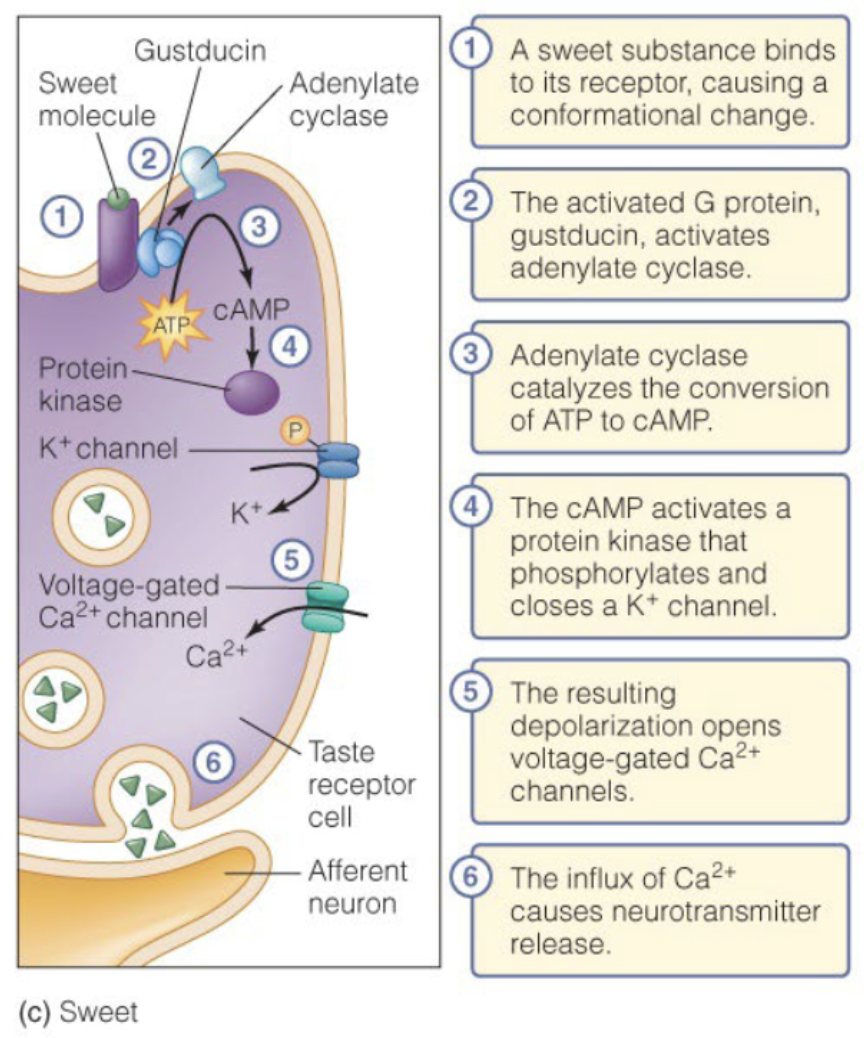
Bitter Sensory Pathway
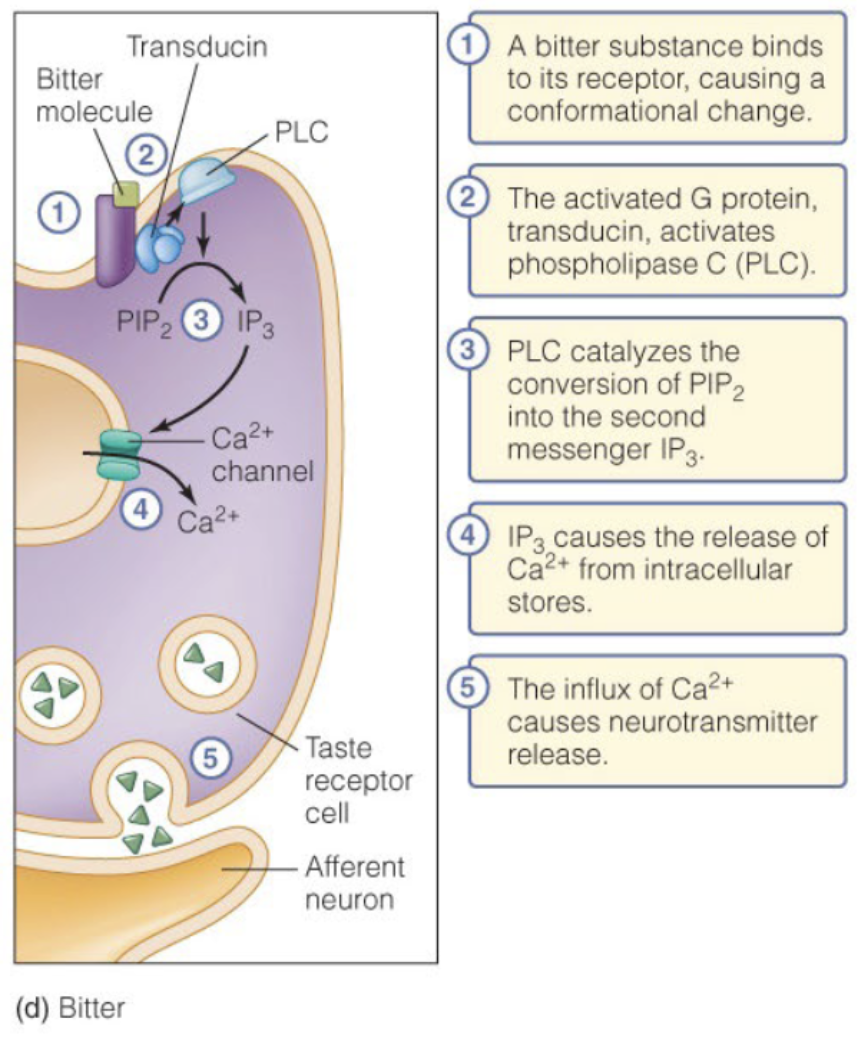
Sour Sensory Pathway
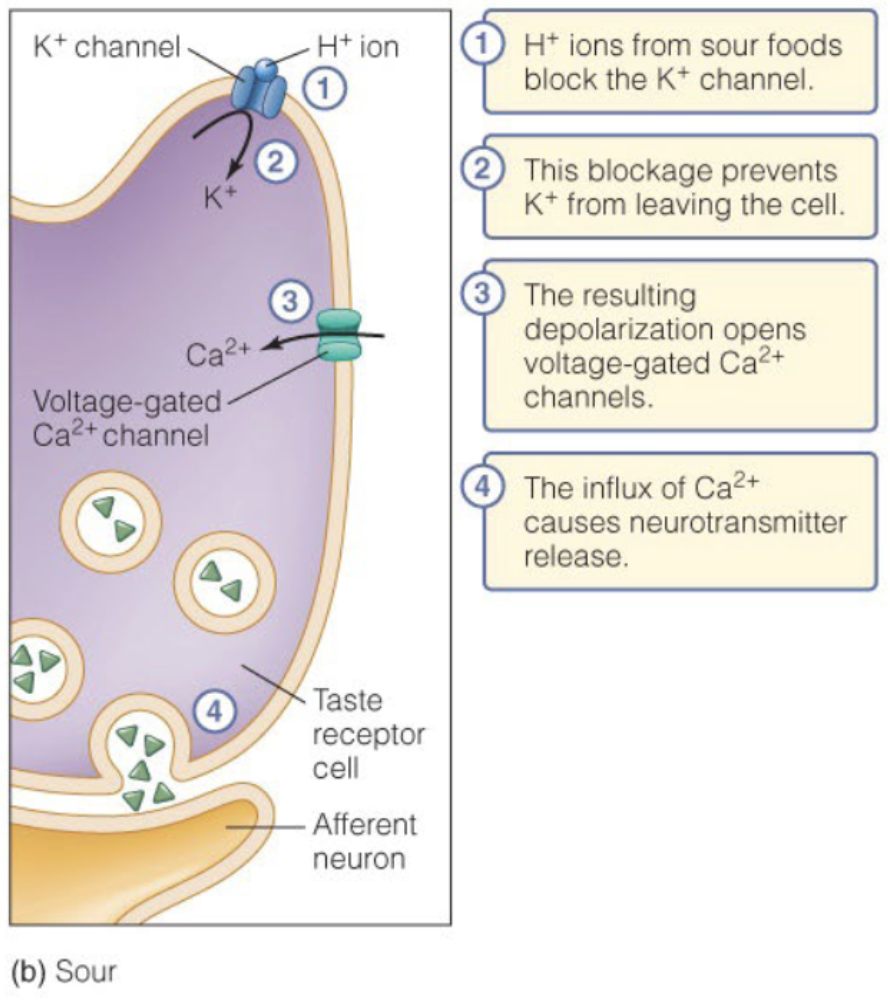
Salty Sensory Pathway
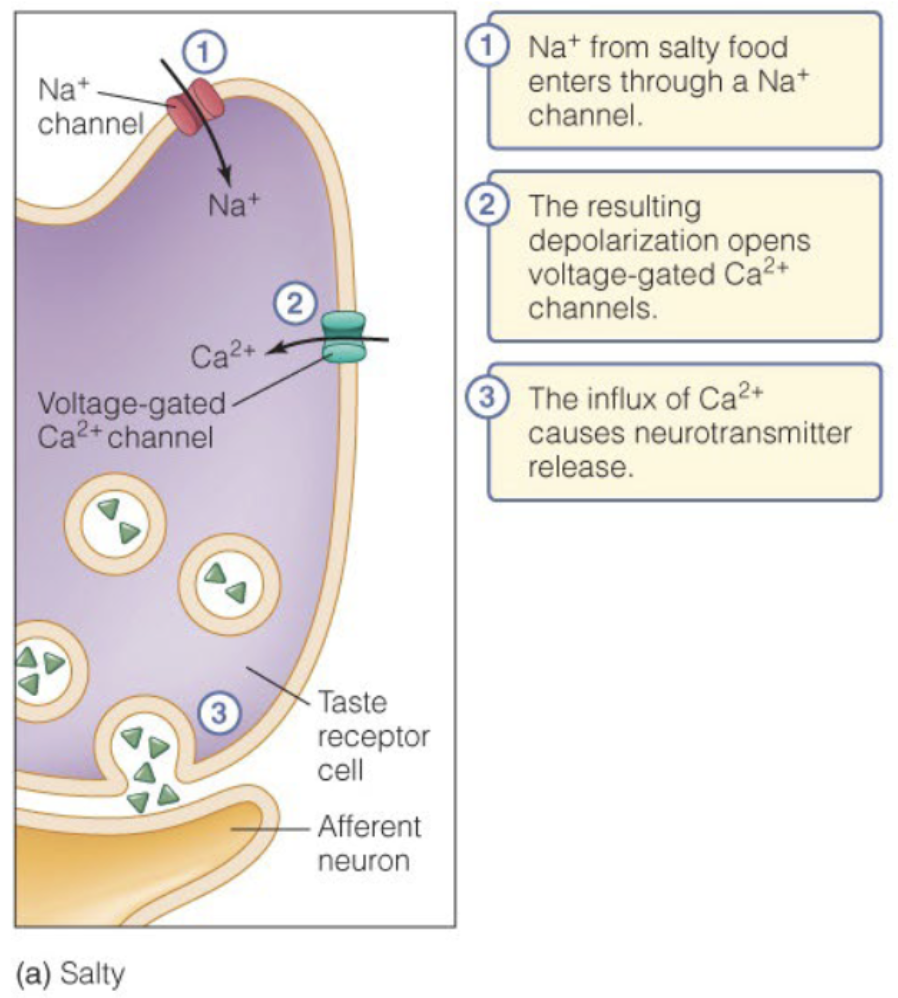
Variations on mechanoreception
touch/pressure
proprioception
equilibrium/balance
hearing
baroreception (BP sensing)
What kind of receptors are widely disperesed in the skin
touch receptors
combination of tonic (Merkel’s disks - for light and fine touch) and phasic (Fuffini corpuscle - sense deep touch - have large receptive fields that don’t overlap as much) receptors which allows for dtection of both transient and sustained stimuli
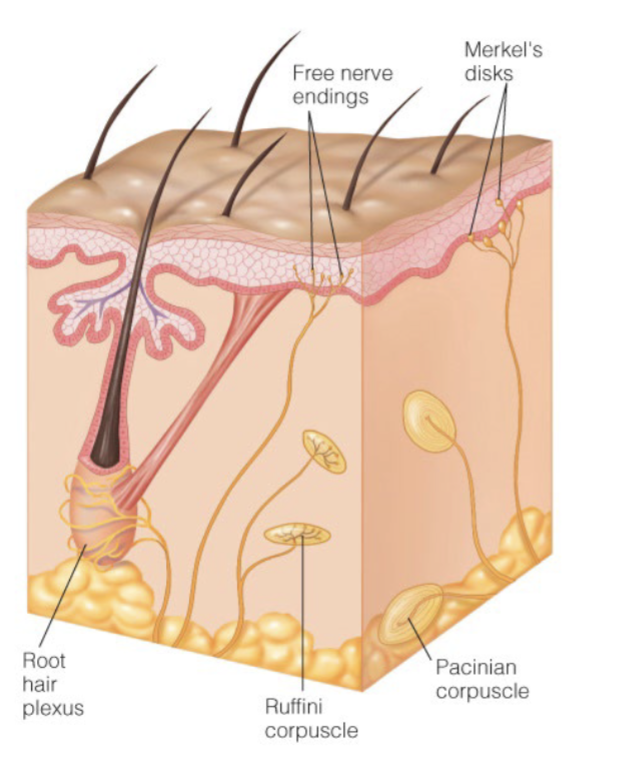
Proprioceptors monitor
the position of the body in space - knowing where you are in space
vertigo: not knowing where you are in space
Muscle spindle fiber
senses stretch - causes contraction - incresaes contractile force
ex: stretching before box jump by bouncing/loading
lack of causes muscle discordination
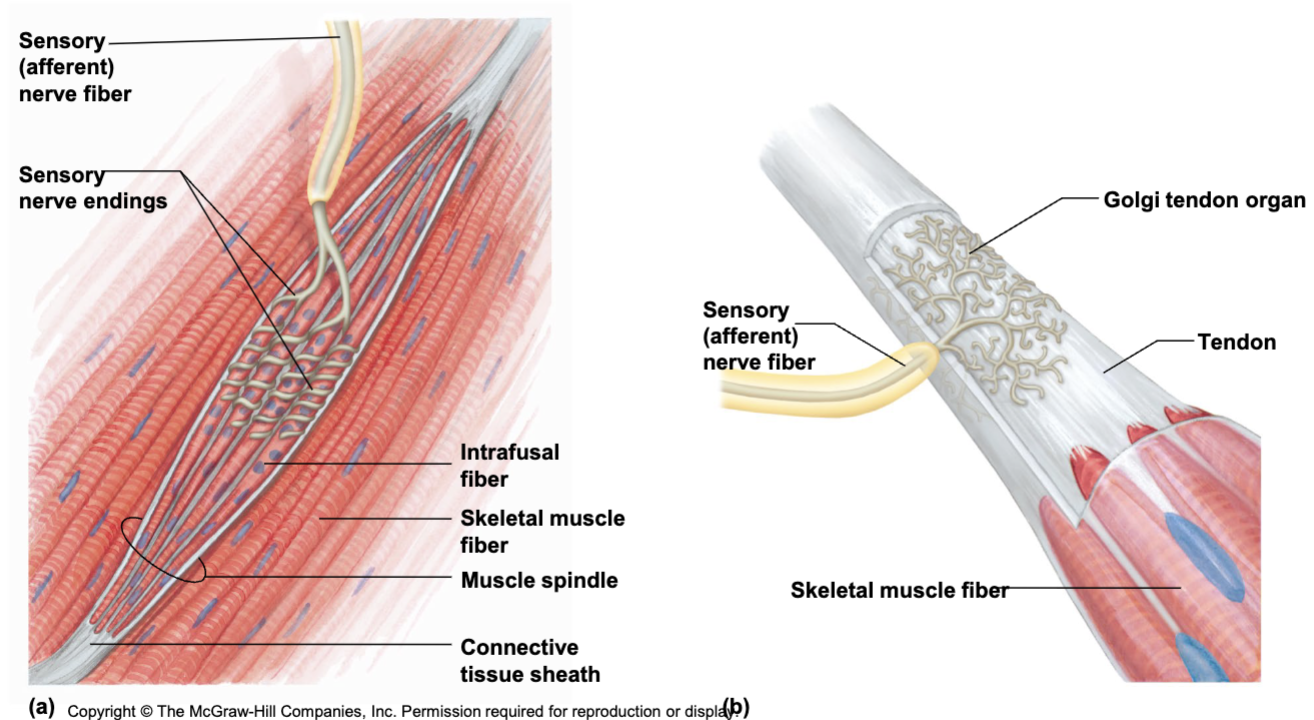
Golgi tendon organ
senses overstretching of muscle - cause muscle relaxation
protection mechanism
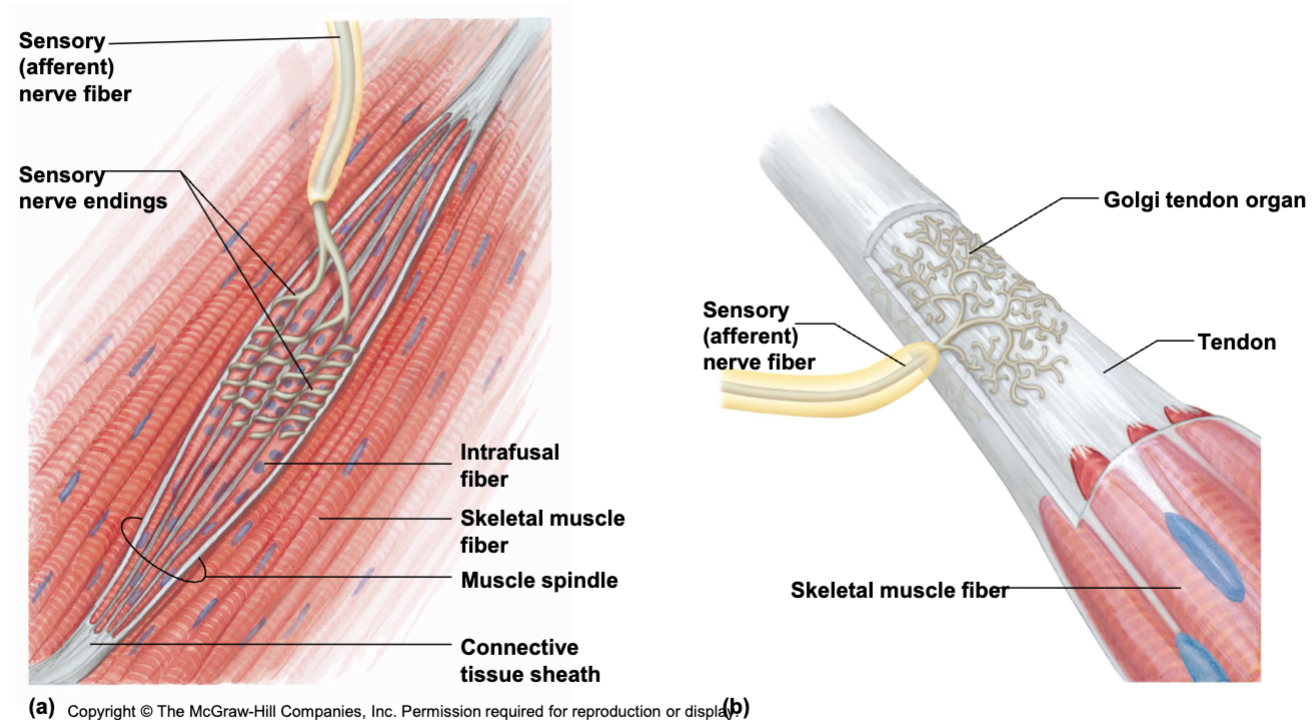
Invertebrate ______ employ _____ for equilibrium
statocysts; mechanoreceptors
ciliated sensory neurons: the mechanoreceptors
helps signal which direction the lobster is moving in/oriented
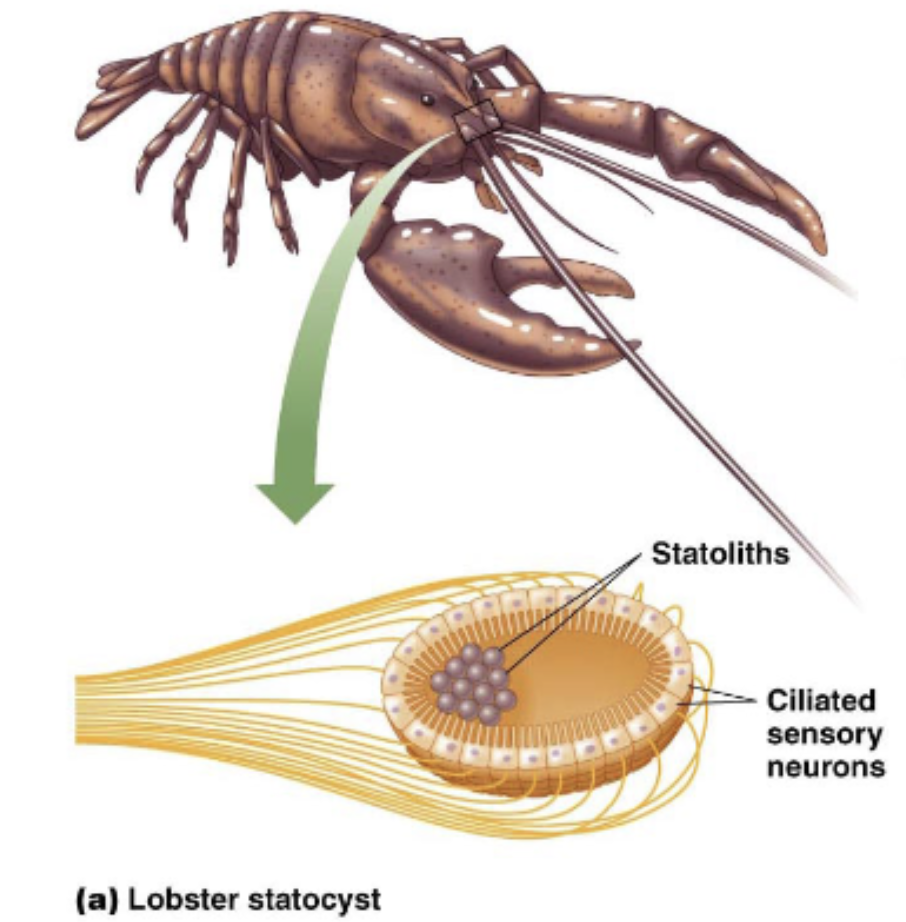
The ____ cell is the _______ responsivle for hearing and ______ in vertebrates
hair; mechanoreceptor; balance
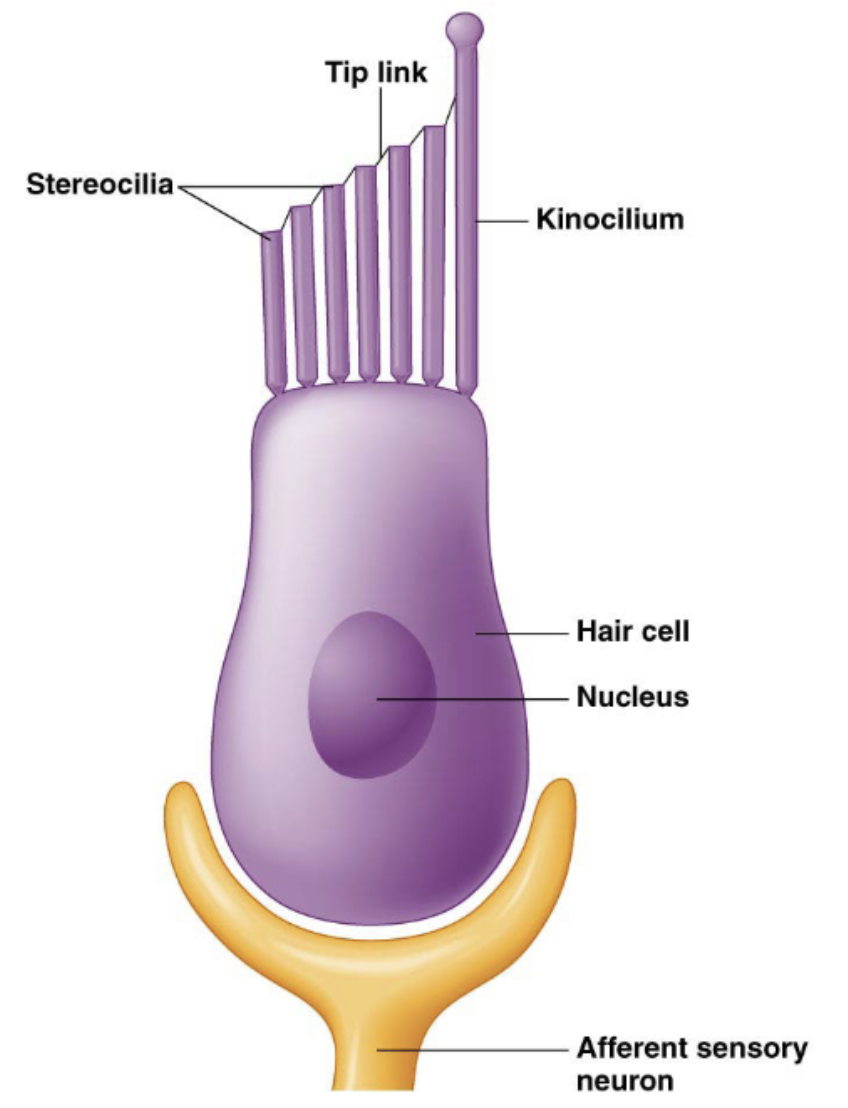
Hair cells general
are bathed in endolymph
maintain high external K+ relative to internal K+
hair cell is and main components
is an epithelial cell
kinocilium and stererocilia
tip links
mechanically-gated K+ (cation) channels (TRP) at stereocilia tips
voltage-gated Ca2+ channels at body of epithelial cells
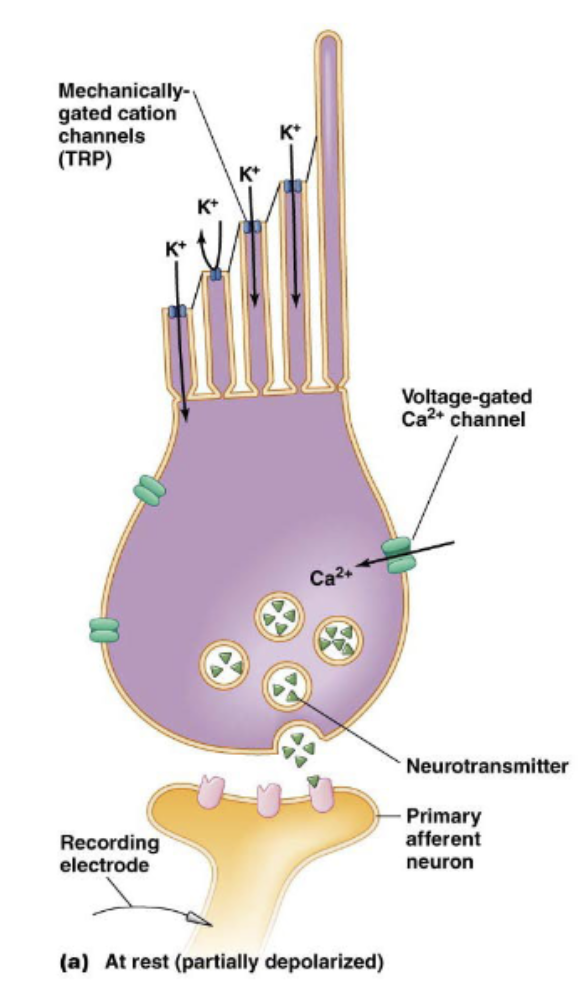
Hair cells maintain ______ ____ on to _____ ____, even in the absence of ______
transmitter release; afferent neuron; delfection
Stereocilia ______ modulate _____ ________ and _______ _____ in hair cells
deflections; K+ conductance; transmitter release
movement to left - cilia move right: depolarization —> higher frequency of APs
movement to right - cilia move left: hyperpolarization —> lower frequency of APs

Where are the mechanreceptors necessary for hearing and balance located
inner ear - vestibular apparatus which includes utricle, saccule, and semicircular canals
Hair cells in _____ and _____ detect movements of _______ _____
utricle; saccule; otolithic membranes
x+y movement (front/back and up/down)
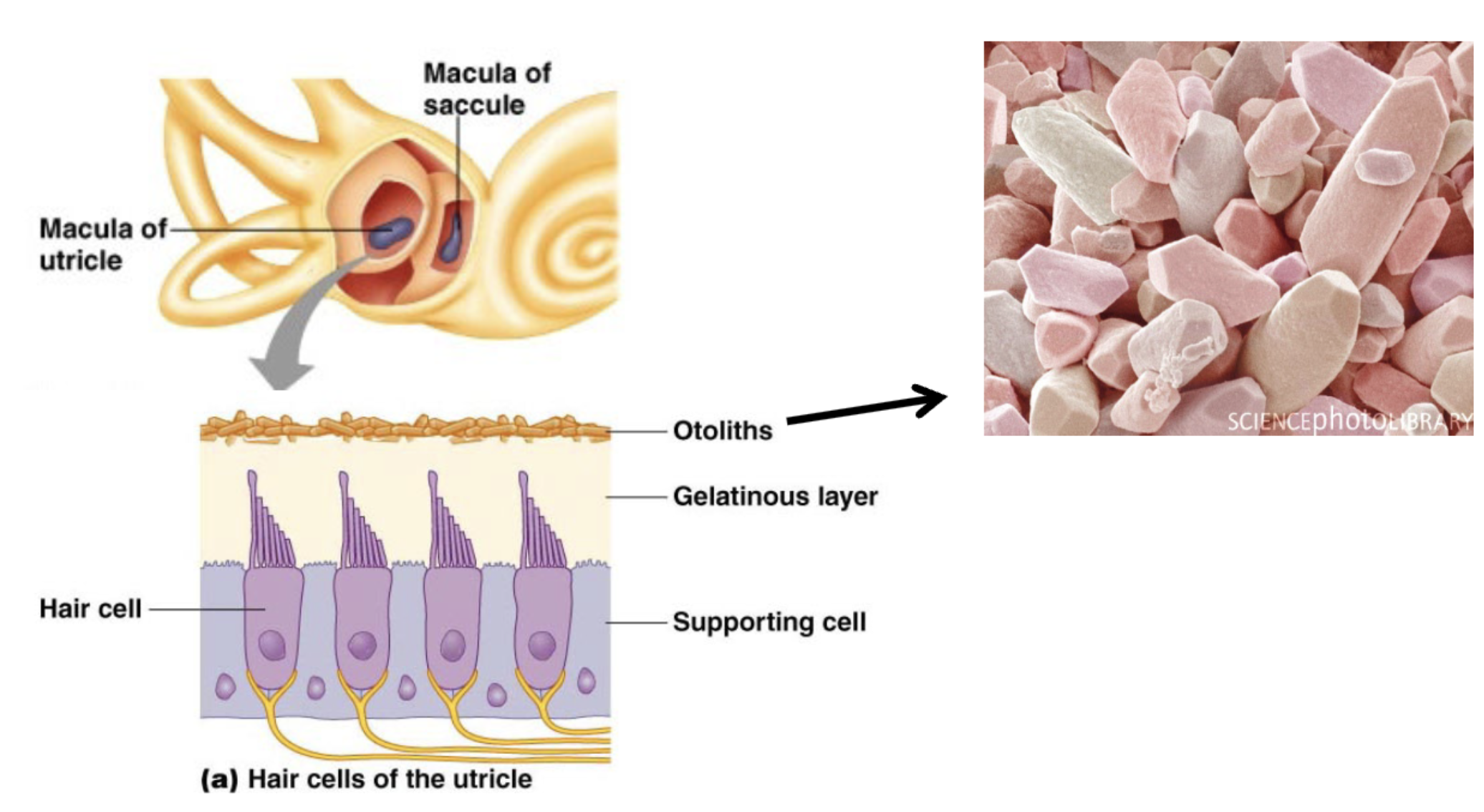
Macula of utricle
recognizes veritcal movement
macula of saccule
recognizes horizontal movement
hearing rocks
otoliths
Label ear (bottom clockwise)
tympanic membrane
ossicles (malleus, incus, stapes)
semicircular canals (balance)
utricle (balance)
saccule (balance)
vestibular apparatus (balance)
cochlea (hearing)
vestibular nerve (hearing)
oval window (hearing and balance)
round window (hearing)

Gelatinous layer
is a liquid (incompressible)
moves due to our movement or movement of oval window
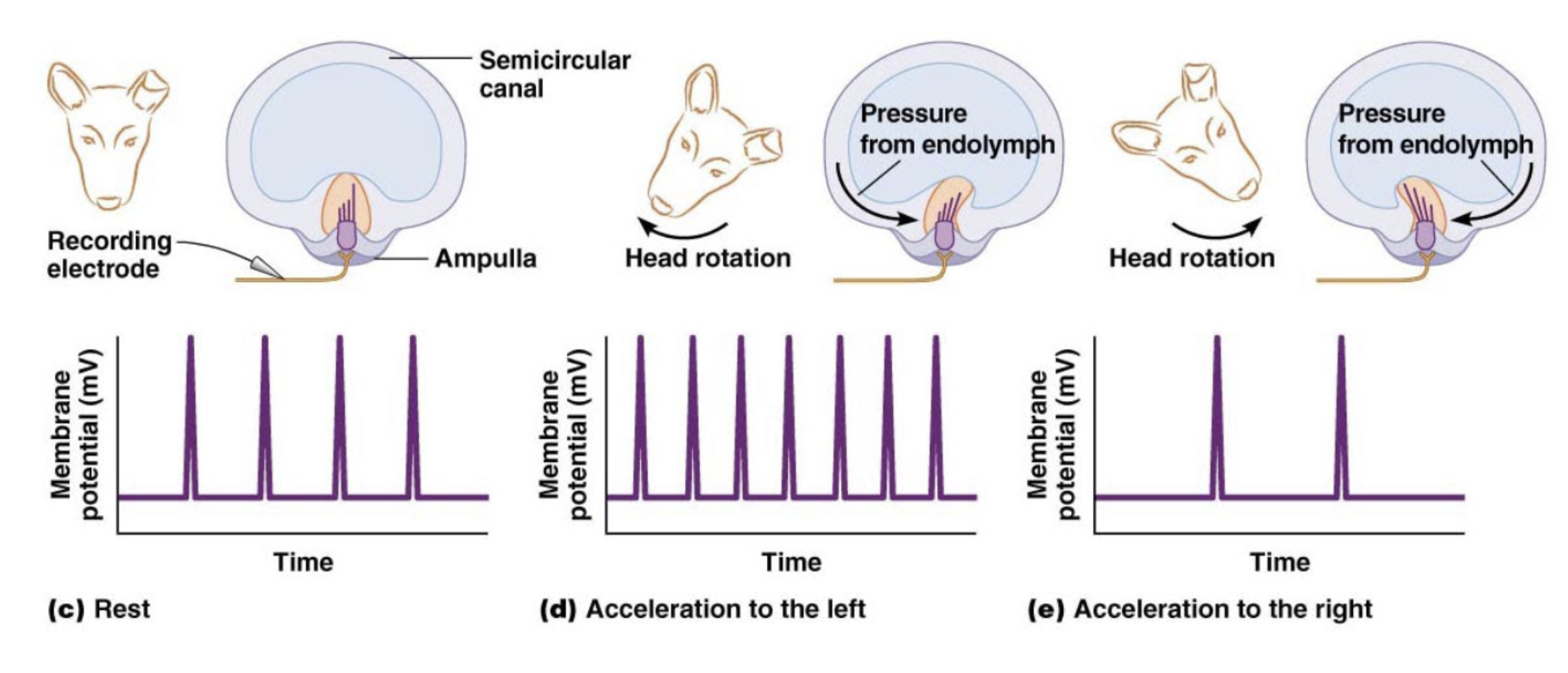
Hair cells in ______ ____ deteect movements of the _____
semicircular canals; cupula
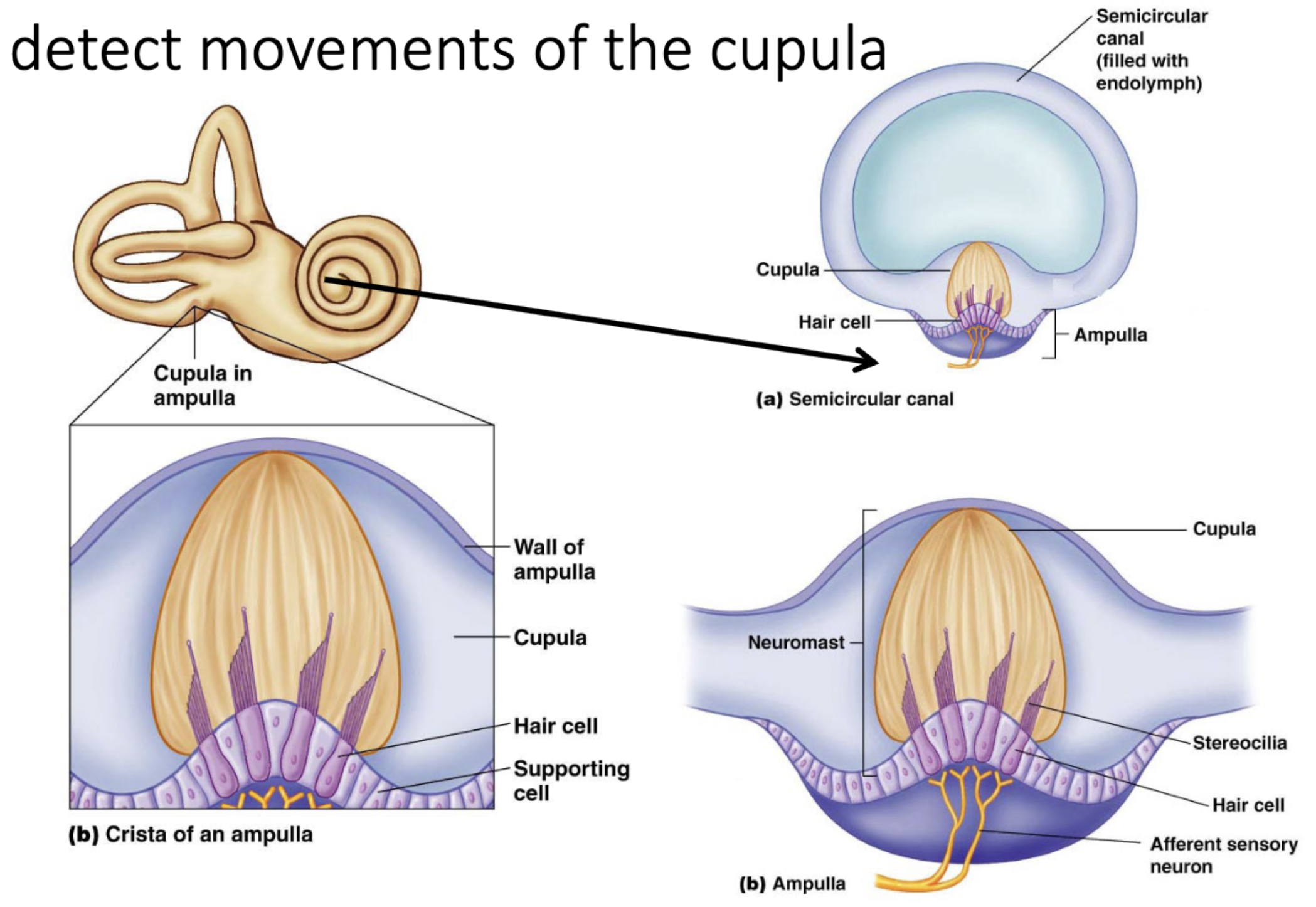
The middle ear
transforms sound waves into basilar membrane vibrations
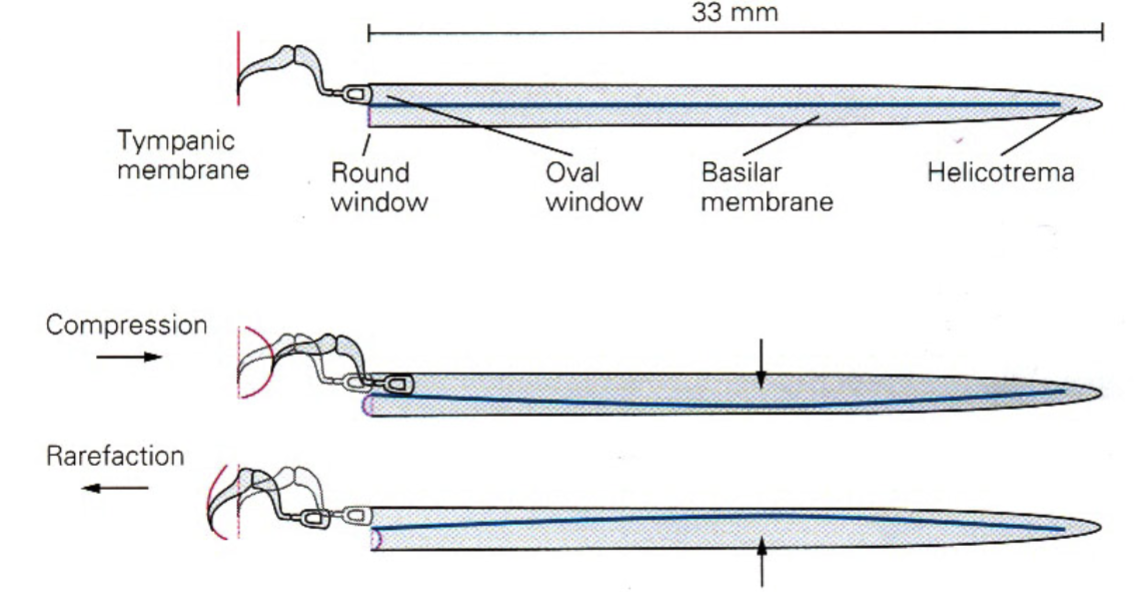
The hair cells of the ____ amplify and transduce ____ _____ ____
cochlea (middle ear); basilar membrane movement/vibration
Label left to right row by row
malleus, incus, stapes, oval window
auditory canal, tympanic membrane, round window
vestibular duct, cochlear duct, organ of corti
basilar membrane, tectorial membrane, hair cells, tympanic duct
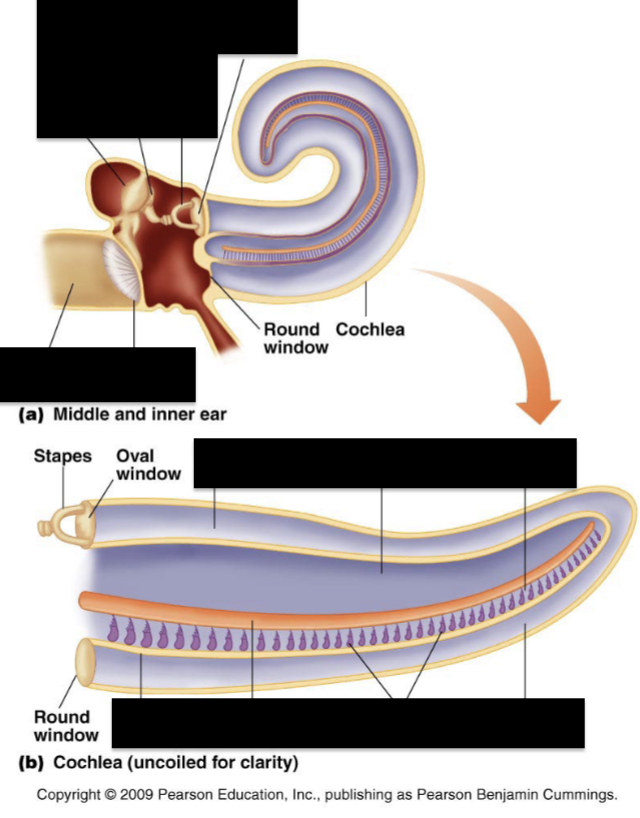
Organ of corti contains
outer and inner hair cells
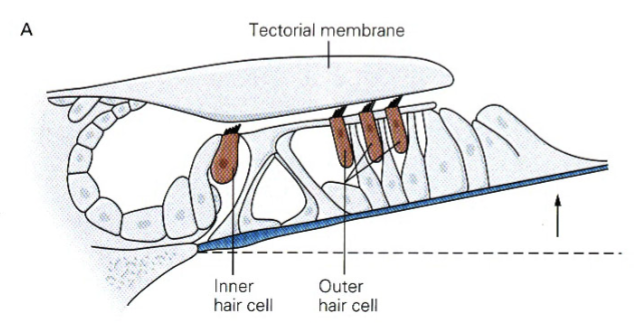
hair cells are an example of
of mechanoreceptors and epithelial sensory receptor cells
inner and outer hair cells detect
basilar membrane movemements - down is inhibition and up is excitation
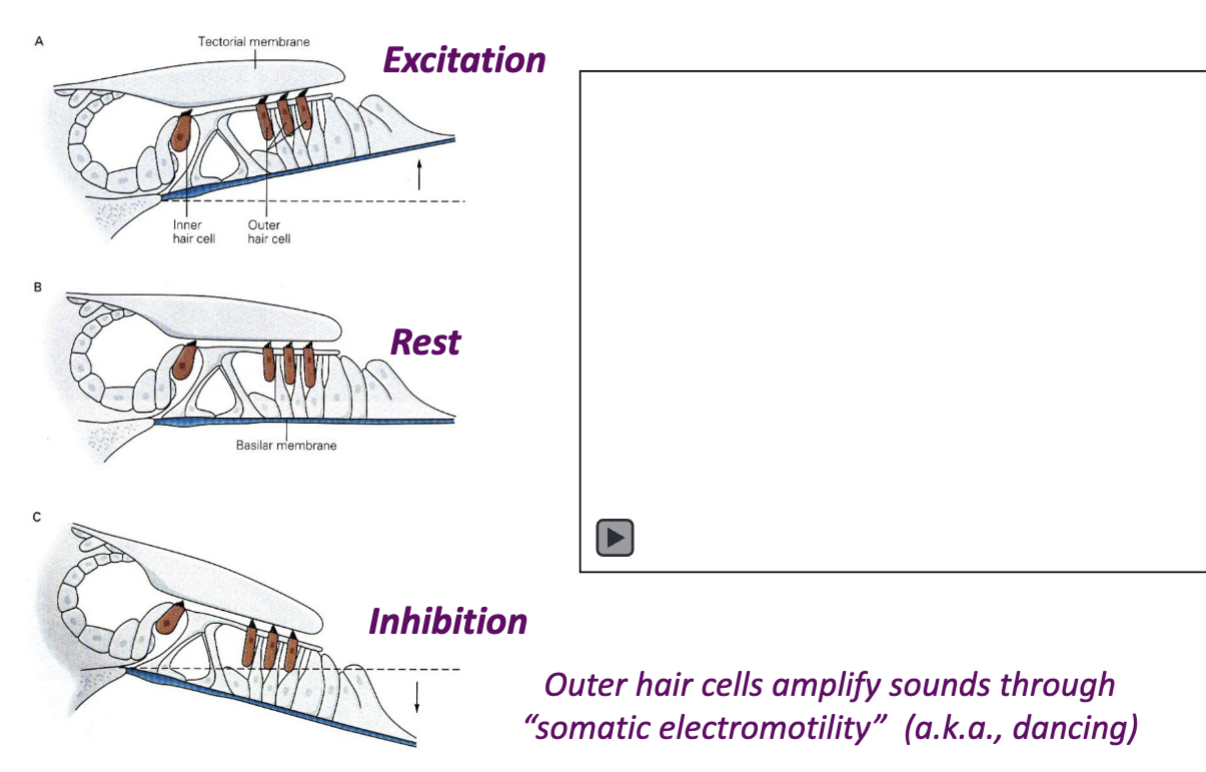
Outer hair cells
amplify sounds through “somatic electromotility” aka dancing
Inner hair cells
transduce basilar membrane vibrations into nerve impulses - sense frequency
How does the basilar membrane detect different sound frequencies
different regions of the basilar membrane resonate with different sound frequencies
Photoreceptors
convert light energy into changes in membrane potential